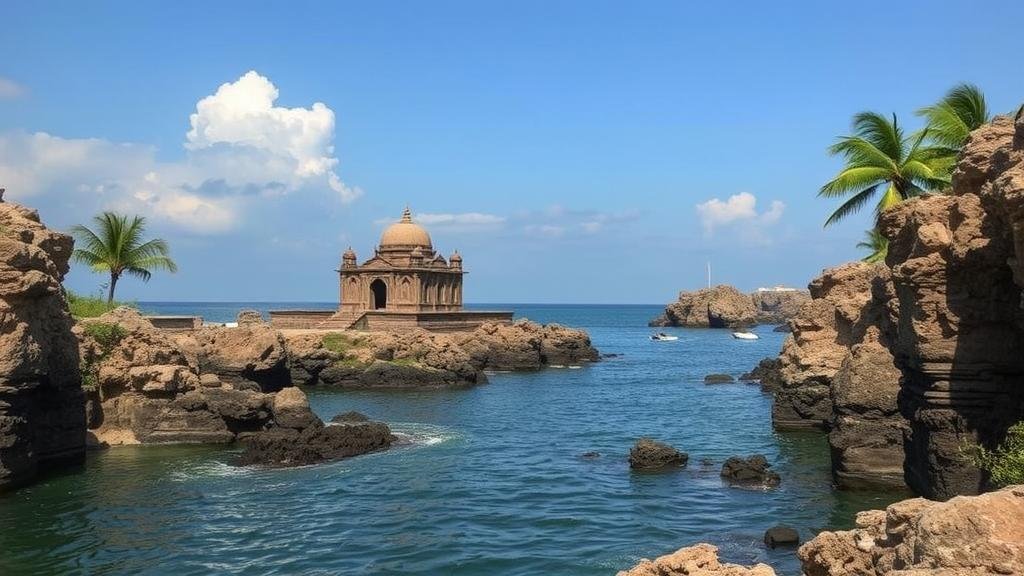Searching for the ruins of vanished Chola Dynasty trade ports in the Indian Ocean.
Searching for the Ruins of Vanished Chola Dynasty Trade Ports in the Indian Ocean
The Chola Dynasty, one of the longest-ruling dynasties in southern India, reached its zenith between the 9th and 13th centuries. Its influence extended beyond the Indian subcontinent, particularly through maritime trade in the Indian Ocean. The search for the remnants of Chola trade ports offers a unique glimpse into the thriving economic networks that once connected India to various parts of Southeast Asia, Africa, and the Middle East. This article embarks on a journey to uncover the ruins of these historic trade hubs, illustrating their significance in world history.
Historical Context of the Chola Dynasty
The Chola Dynasty, founded around the 3rd century BCE, saw significant expansion under rulers like Rajaraja Chola I and his son Rajendra Chola I. Rajaraja Chola I, who ruled from 985 to 1014 CE, is particularly noted for transforming the Chola Empire into a formidable naval power. His successors expanded trade routes and established ports that became bustling centers of commerce.
One of the hallmarks of the Chola Dynasty was its maritime prowess. With a powerful navy, the Cholas controlled key trading routes in the Indian Ocean, facilitating trade with regions such as:
- East Africa
- Southeast Asia, including modern-day Malaysia and Indonesia
- The Maldives
Trade was bolstered by the export of valuable spices, textiles, and precious stones, while imports included gold and ivory, creating a tapestry of cultural exchange.
Key Chola Trade Ports
Some of the most significant trade ports established by the Chola Dynasty include:
- Thanjavur: The capital of the Chola Empire, it served as a central hub for trade and administration.
- Kaveripattinam: Known for its extensive trading activities, this port was crucial for maritime trade.
- Nagapattinam: An important port town that served as a gateway to Southeast Asian markets.
These ports not only supported economic growth but also facilitated cultural intersections, enhancing the exchange of ideas, religions, and art forms across the seas.
Exploration of Erased Trade Routes
Today, researchers and archaeologists are engaged in documenting and understanding Chola maritime activities. The exploration of submerged or vanished ports mainly involves:
- Underwater archaeology to locate submerged port structures.
- Geophysical surveys to map ancient shipping routes.
- Historical textual analysis to correlate trade records with known geographical sites.
One notable project has been the archaeological surveys off the coast of Kaveripattinam, where explorers have found pottery shards and Tamil inscriptions dating back to the Chola period.
Real-World Applications and Discoveries
Identifying these ancient trade ports offers various benefits:
- Cultural Heritage Preservation: Understanding the significance of these ports aids in cultural preservation efforts.
- Tourism Development: These sites can be promoted as historical tourism destinations.
- Marine Conservation: Exploring ancient trade routes could help in marine biodiversity studies.
For example, the recent discovery of buried structures at Nagapattinam has led to the establishment of maritime archaeology programs, which not only educate the public but also foster a sense of community among local stakeholders.
Challenges in Discovering Chola Trade Ports
The pursuit of discovering Chola trade ports is fraught with challenges:
- Environmental factors, such as coastal erosion and rising sea levels, continually alter the landscapes where these ports once thrived.
- Lack of funding for archaeological projects limits the scope of exploration efforts.
- Political and logistical issues in accessing remote areas may hinder progress.
Researchers are increasingly reliant on interdisciplinary partnerships, collaborating with marine biologists, historians, and local governments to overcome these obstacles.
Conclusion: The Importance of Rediscovery
The search for the ruins of the Chola Dynasty trade ports in the Indian Ocean not only reveals the grandeur of a bygone era but also enriches our understanding of historical trade networks. As scholars and archaeologists piece together the remnants of these maritime hubs, the information gleaned will provide valuable insights into ancient commerce, international relations, and cross-cultural exchanges.
In the broader context, recognizing the historical significance of these trade routes allows contemporary societies to appreciate the longstanding connections that have shaped todays global economy. It serves as a reminder of the interconnectedness of cultures throughout history.
To support these efforts, interested individuals can engage in local historical societies, participate in archaeological digs, or simply educate themselves and others about the Chola Dynastys rich legacy.



